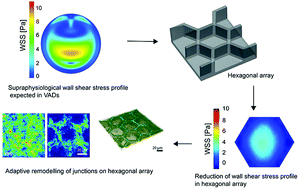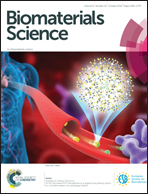Honeycomb-structured metasurfaces for the adaptive nesting of endothelial cells under hemodynamic loads†
Abstract
The thrombogenicity of artificial materials comprising ventricular assist devices (VADs) limits their long-term integration in the human body. A living endothelium covering the luminal surface can provide a safe interface working compatibly with blood and circumventing this problem. However, the survival of endothelial cells is endangered by non-physiological hemodynamic conditions generated by VAD function, including high wall shear stress and deformation. Here, we introduce a surface topography comprising hexagonal honeycomb shelters in which cells remodel to generate coherently organized patterns of subcellular compartments. The resulting hexagonal array shows resistance to supraphysiological loads maintaining endothelium integrity and avoiding local discontinuities.



 Please wait while we load your content...
Please wait while we load your content...